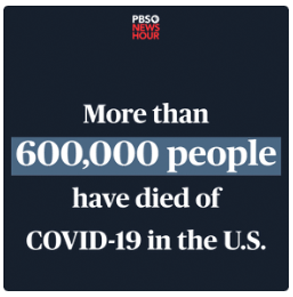Health Plan Weekly
-
Employer Group Fires First Shot in Fight Over Mental Health Parity Regs
The ERISA Industry Committee (ERIC), a benefits trade group for large employers, launched an ad campaign attacking the Biden administration’s mental health parity policies — a notable escalation in plan sponsors’ intensifying opposition to the administration’s approach to mental health care access, which could ultimately lead to litigation.
In a press release, ERIC said it hopes to influence upcoming mental health parity regulation, noting that “departments of President Biden’s administration, including the U.S. Departments of Health and Human Services (HHS), Labor (DOL) and the Treasury are finalizing proposed rule changes regarding mental health and substance use disorder parity.” The expected rule would be a finalized version of a regulation released in September 2023, which calls for much stricter network adequacy standards than were required in previous parity rulemaking.

-
For Humana, Solid Start to 2024 Can’t Mask Looming 2025 Troubles
Although Humana Inc. beat Wall Street’s expectations with its first-quarter 2024 earnings per share (EPS), the recently finalized 2025 Medicare Advantage and Part D rate notice nonetheless cast a shadow over the insurer’s longer-term financial projections and thus dimmed analysts’ enthusiasm.
In fact, Humana withdrew its 2025 EPS guidance of $6 to $10, with CEO Bruce Broussard partially blaming the move on the “significant difference between the final rate notice and our previous funding assumption.”
When CMS on April 1 released its final rate projection for MA and Part D plans, the agency said it anticipates plans will see a net revenue increase of 3.70% next year. But that figure did not improve compared to the projected rate increase — despite the industry’s urging — and it represents a 0.16% payment decrease excluding the assumption that MA risk scores will increase by an average of 3.86%.

-
Insurer Sees Savings via Partnership With Telenutrition Company
Chorus Community Health Plans (CCHP) saw significant savings after partnering with telenutrition company Foodsmart, according to a study released by the insurer and company on April 25. CCHP president Mark Rakowski tells AIS Health, a division of MMIT, that the results indicate payers can benefit financially by providing members access to dietitians and tips to improve their eating habits.
The study matched more than 3,000 CCHP members who used Foodsmart with a control group. After one year of enrollment in the program, the Foodsmart cohort achieved an average $33 per member per month (PMPM) in net savings. CCHP, a Wisconsin-based insurer, saw $32 PMPM savings among the 2,986 Medicaid beneficiaries in the study and $45 PMPM among the 176 Affordable Care Act exchange enrollees who used Foodsmart.

-
Key Financial Data for Leading Health Plans — Fourth Quarter 2023
Here’s how major U.S. health insurers performed financially in the fourth quarter of 2023. Health Plan Weekly subscribers can access more health plan financial data — including year-over-year comparisons of leading health plans’ net income, premium revenue, medical loss ratios and net margins. Just email support@aishealth.com to request spreadsheets for current and past quarters.
-
News Briefs: Kaiser Reports Data Breach Affecting 1.34M
Kaiser Foundation Health Plan, Inc. is notifying millions of current and former customers that their information may have been shared with third parties included Google, Microsoft and the social medial platform X. Kaiser reported the breach to the HHS Office for Civil Rights on April 12, according to an OCR filing, which stated that the number of individuals affected was 1.34 million. In a statement to the news outlet TechCrunch, Kaiser said that “certain online technologies, previously installed on its websites and mobile applications, may have transmitted personal information to third-party vendors.” Compromised data includes member names and IP addresses, as well as information about how members “interacted with and navigated through the [Kaiser Permanente] website and mobile applications, and search terms used in the health encyclopedia,” according to the article.











